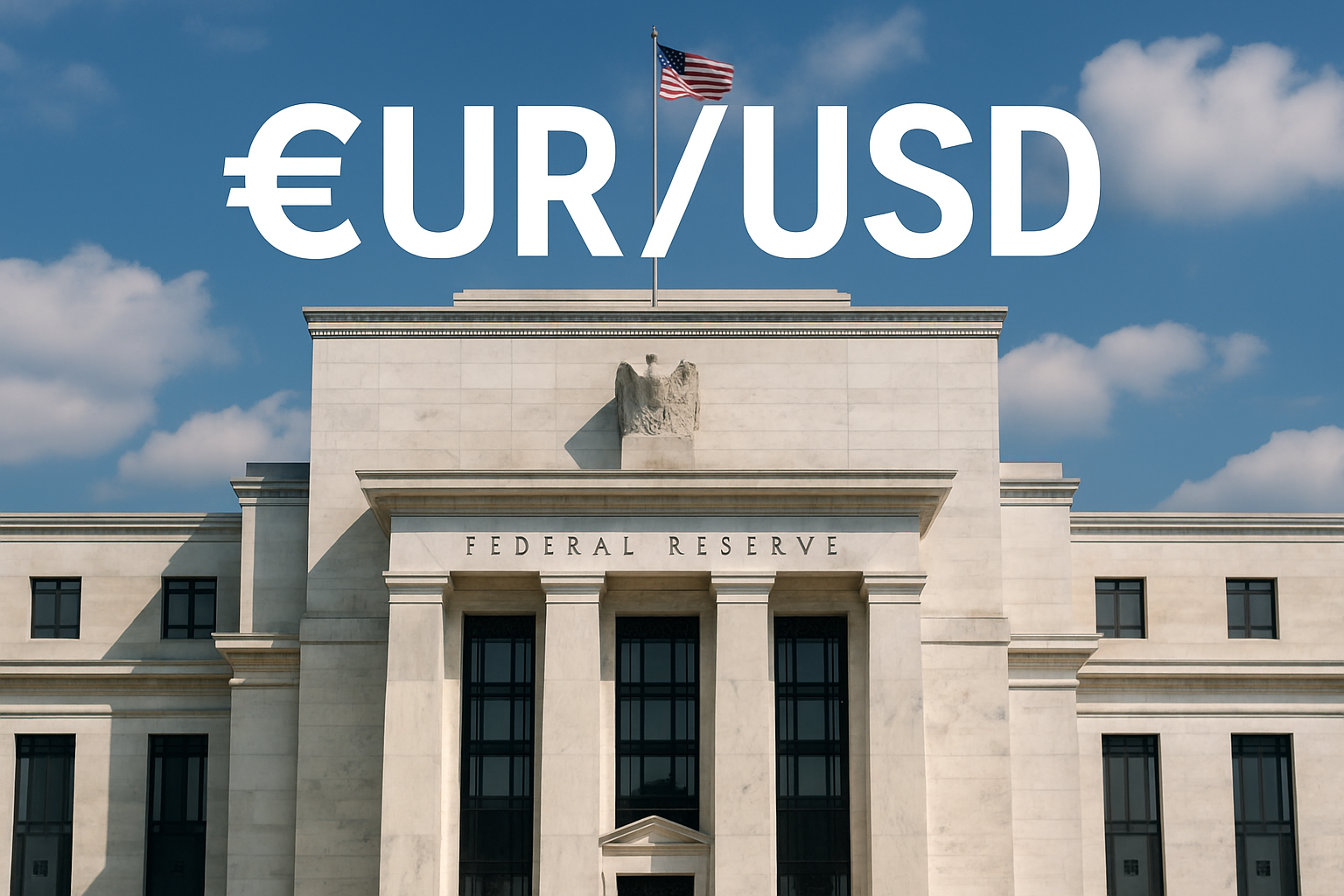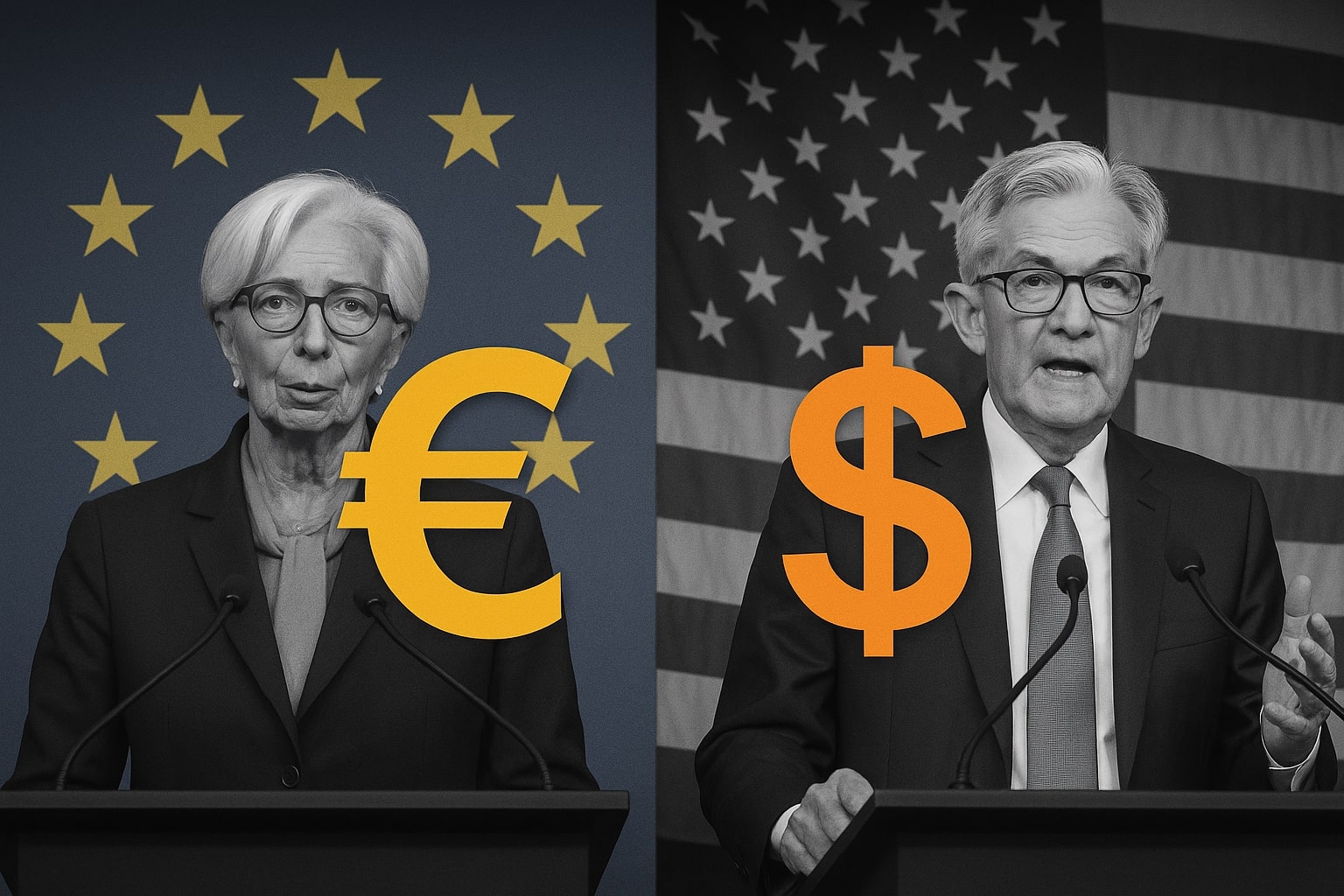
EUR/USD Shows Mixed Signals as Market Awaits Clarity on U.S. Economic Outlook
How will the recent downgrades in the U.S. credit rating affect the future trajectory of EUR/USD? Could this lead to a surge beyond 1.1300, or will the pair face renewed pressure below 1.1100? | That's TradingNEWS
EUR/USD Technical Overview: Navigating the Volatility in 2025
The EUR/USD currency pair has displayed considerable volatility recently, trading at 1.1199 as of the latest session, after dipping to a low of 1.1170 during the European trading session. This marks a 0.35% rise on the day but continues to struggle against the dominant influence of the U.S. Dollar (USD) amidst growing concerns about the U.S. financial situation. The recent downgrade of the U.S. credit rating by Moody’s has added to the market uncertainty, pushing the EUR/USD higher as traders reassess risk and demand for safe havens like the euro.
Impact of U.S. Financial Stability on EUR/USD
The downgrade by Moody’s has raised concerns about U.S. fiscal health, particularly with the country's debt reaching a record $36 trillion, a figure that is undermining confidence in the USD. As traders react to this downgrade, the EUR/USD pair has seen a modest uptick, reflecting a shift in market sentiment from the USD to the euro. On the flip side, the U.S. Dollar Index (DXY) remains strong, hovering around 100.79, signaling that while EUR/USD has risen slightly, the USD still holds significant weight due to broader economic dynamics.
Shifting ECB Rate Cut Expectations and the Eurozone Economy
The recent Eurozone inflation data revealed that consumer prices have risen more than anticipated in April, putting additional pressure on the European Central Bank (ECB). Initially, there was a strong market expectation for an ECB rate cut in June, with odds as high as 60%, but these have since dropped to below 50% due to inflationary pressures. With the eurozone's CPI now holding steady at 2.2%, the outlook for future ECB monetary policy remains uncertain.
Despite this, the EUR/USD pair managed to rise slightly, aided by the trade balance data that showed a €27.9B surplus in April, significantly surpassing the forecasted €17.5B. This trade surplus, particularly with Italy’s performance, has contributed to the strength of the euro, at least in the short term.
Market Sentiment and Technicals: EUR/USD Outlook
Technically, EUR/USD has encountered resistance around 1.1200 after previously dipping below the 1.1200 mark, reflecting weak bullish momentum. Sellers have dominated, but a rebound above 1.1200 could prompt further bullish movement toward 1.1275-1.1280, with a strong focus on 1.1300 as a key psychological level. If the EUR/USD pair were to break above this level, a potential surge towards the 1.1400 resistance zone might follow. However, should the USD regain strength, EUR/USD may face challenges, with downside risks testing 1.1130, followed by further support at 1.1100 and potentially down to 1.1000.
Consumer Sentiment and Economic Indicators
The drop in U.S. consumer sentiment to 50.8, far below the expected 53.1, combined with rising inflation expectations of 7.3%, has intensified market concerns about the U.S. economy. These factors play a crucial role in EUR/USD movements as they influence expectations around Fed policy. Despite these signals of economic weakness, TIC flows into U.S. assets surged to $161.8B, indicating that there is still strong foreign demand for U.S. dollar-denominated assets, especially in light of lower interest rates and the possibility of rate cuts.
Key Levels for EUR/USD Traders
As EUR/USD struggles to break past 1.1200, traders are closely monitoring the key levels to identify future trading opportunities. Should the pair break below 1.1100, the downside could accelerate, with a potential challenge to the 1.1000 mark. On the upside, however, if EUR/USD surges past 1.1300, it would likely lead to short-covering and further upside toward 1.1400 and potentially beyond.
What’s Next for EUR/USD?
The immediate future for EUR/USD will largely depend on upcoming economic data and statements from Fed officials about inflation and interest rates. With U.S. GDP growth slowing and concerns about fiscal policy mounting, the Euro could continue to outperform the USD in the near term. However, global factors such as trade agreements and geopolitical risks will also influence market sentiment.
In conclusion, EUR/USD remains highly sensitive to both U.S. economic data and the ongoing policy decisions in Europe. Traders should be prepared for further volatility as the technical outlook aligns with the broader fundamental story of economic uncertainty and shifting market confidence in the U.S. Dollar.
That's TradingNEWS
Read More
-
QDVO ETF (NYSEARCA:QDVO) Aims for $35 in 2025 and $42 in 2026 as AI Titans and 9.3% Yield Drive Record Performance
04.11.2025 · TradingNEWS ArchiveStocks
-
Ripple’s XRP ETFs XRPI and XRPR Rally Toward $25 as Institutional Demand and ETF Launch Momentum Lift XRP
04.11.2025 · TradingNEWS ArchiveCrypto
-
Natural Gas Price (NG=F) Extends Gains to $4.21 as Winter Demand and Record LNG Exports Fuel Bullish Momentum
04.11.2025 · TradingNEWS ArchiveCommodities
-
USD/JPY Price Forecast - JPY=X Holds Above 153.25 as Verbal Intervention Fails to Reverse Dollar Strength
04.11.2025 · TradingNEWS ArchiveForex



















